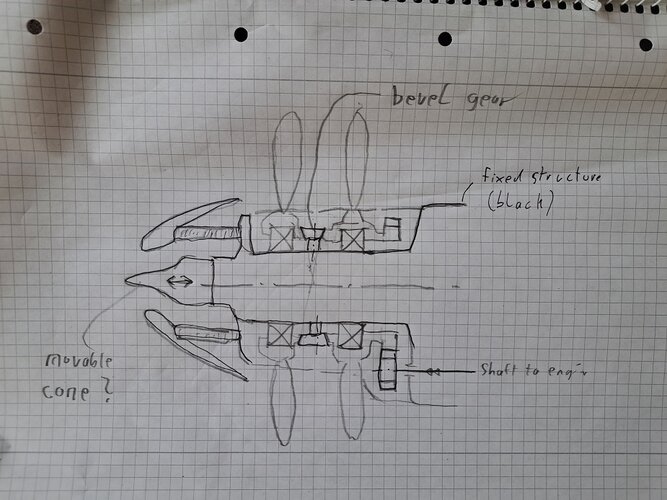blackkite
Don't laugh, don't cry, don't even curse, but.....
- Joined
- 31 May 2007
- Messages
- 8,813
- Reaction score
- 7,688
Attachments
Last edited:
How much fuel volume did the 2-seater lose?
How much fuel volume did the 2-seater lose?

| Span | Length | Height | Wing Area | Empty Equipped Weight | Loaded Weight* | Max. Wing Loading | Max. Speed | Rate of Climb | Ceiling |
| 15.8 m 51' 9.5" | 17.2 m 56' 4.8" | 5.05 m 16' 6" | 50 m² 538 ft² | 8600 kg 18959 lbs | 12300 kg 27116 lbs | 246 kg/m² 50.4 lbs/ft² | 930 km/h 577 mph | 21 m/sec 69 ft/sec | 12500 m 41000' |

I'm not sure what this drawing is.
But this concept is same as the design in the Daimler's report.
Perhaps this design is for maximum speed 850km/h based on maximum speed 600km/h design.
Propeller diameter of this total 16,000hp power engine may be about 5m, because NK12 12,000 shp engine's propeller diameter is 5.6m.
This drawing clearly shows the undercarriage retract position.
What is included in the description of this drawing?
How much is propeller diameter?
If propeller diameter is 5m, each engine height is 1m.
I can't find such a engine at all.
Power unit is a big mystery.
I know that the front engine is cooled by the annular radiator in the nose, but I don't really know how the rear engine is cooled. Perhaps there is a radiator installed in the rudder.

Thanks a lot Nicknick-san!View attachment 744058
This is a very simplified sketch of how it might have worked. I didn't include the variable pitch mechanism because this would have made it very complicate. I guess, there was a movable lever inside the fixed tube which was moved in axial direction and moved a disk back and forth through holes. The disks (guess one for each prop) could have been coaxially mounted on the outside of the tube and rollers on the prop hub could have been actuated by this, by being pushed back and forth and so actuating the variable pitch system.
Of course I tried to get this book, but hard to get by Amazon.co.jp.I guess you don't have my Secret Projects of the Luftwaffe book then?
View attachment 744049
View attachment 744051
Of course I tried to get this book, but hard to get by Amazon.co.jp.
I only find following book in Amazon.co.jp.
In any case, I think Dan-san and Justo-san's ability to gather information is amazing.
hesham shared this list of Dornier P.192 variants in an old generic topic that has been split:
This is a pretty good source:
